BLOG - Page 41
Recently created mixtures:

Sea-Buckthorn Macerated oil
February 7, 2019

Home made air freshener
June 29, 2016

Homemade Dog-rose distillate
June 28, 2016

Homemade jasmine distillate
June 22, 2016

Moxibustion treatment with Moxa stick
May 30, 2016

Face and body gentle oil cleanser
May 26, 2016
BLOG / LATEST ADDITIONS!
Agarwood Distillates (Aquilaria Agallocha) ☸ Herbal distillates ☸ Base / General


Agarwood, also known as Oud, Oodh or Agar, is a dark resinous heartwood that forms in Aquilaria and Gyrinops trees
when they become infected with a type of mould.
Prior to infection, the
heartwood is relatively light and pale coloured, however, as the
infection progresses, the tree produces a dark aromatic resin in
response to the attack, which results in a very dense, dark, resin
embedded heartwood. This tree grows in southeast Asia, Vietnam, Pakistan, Bangladesh.
Method of Extraction: There are at least 3 common methods to extract oil from Agarwood (Hydro Distillation, Steam Distillation, Supercritical CO2 Extraction). In hydro distillation and steam distillation process comes Agarwood Hydrosol.
Method of Extraction: There are at least 3 common methods to extract oil from Agarwood (Hydro Distillation, Steam Distillation, Supercritical CO2 Extraction). In hydro distillation and steam distillation process comes Agarwood Hydrosol.
Submitted by OperaDreamhouse (May 14, 2014)
Silver Birch Distillates (Betula Pendula) ☸ Herbal distillates ☸ Base / General


Betula pendula (silver birch) is a species of tree in the family Betulaceae, native to Europe, though in southern Europe it is only found at higher altitudes. Its range extends into southwest Asia in the mountains of northern Turkey and the Caucasus. It is a medium-sized deciduous tree, typically reaching 15–25 metres tall, exceptionally up to 39 metres.
Submitted by OperaDreamhouse (May 14, 2014)
Himalayan Cedar Distillate (Cedrus Deodara) ☸ Herbal distillates ☸ Base / General


Cedrus Deodara is a species of cedar native to the western Himalayas in eastern Afghanistan, northern Pakistan, north Republic of India, southwesternmost Tibet in (China) and western Nepal,
occurring at 1,500 - 3,200 m altitude. It is a large evergreen coniferous
tree reaching 40 - 50 m tall, exceptionally 60 m with a trunk up to 3 m
in diameter. It has a conic crown with level branches and drooping
branchlets.
Submitted by OperaDreamhouse (May 7, 2014)
St Johns Wort Distillate (Hypericum Perforatum) ☸ Herbal distillates ☸ Base / General
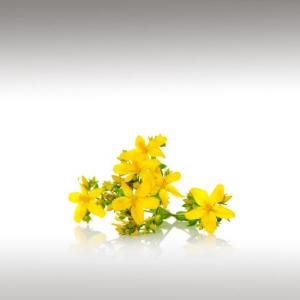
 Hypericum perforatum, also known as St John's wort, is a flowering plant species of the genus Hypericum and a medicinal herb that is sold over-the-counter as a treatment for depression. Other names for it include Tipton's weed, rosin rose, goatweed, chase-devil, or Klamath weed.
Hypericum perforatum, also known as St John's wort, is a flowering plant species of the genus Hypericum and a medicinal herb that is sold over-the-counter as a treatment for depression. Other names for it include Tipton's weed, rosin rose, goatweed, chase-devil, or Klamath weed.
Submitted by OperaDreamhouse (May 7, 2014)
Witch-hazel distillate (Hamamelis virginiana) ☸ Herbal distillates ☸ Base / General

 Witch hazel is an astringent produced from the leaves and bark of the
North American Witch-hazel shrub (Hamamelis virginiana), which grows
naturally from Nova Scotia west to Ontario, Canada, and south to Florida
and Texas in the United States. This plant extract was widely used for
medicinal purposes by American Indians and is a component of a variety
of commercial healthcare products.
Witch hazel is an astringent produced from the leaves and bark of the
North American Witch-hazel shrub (Hamamelis virginiana), which grows
naturally from Nova Scotia west to Ontario, Canada, and south to Florida
and Texas in the United States. This plant extract was widely used for
medicinal purposes by American Indians and is a component of a variety
of commercial healthcare products.
Submitted by OperaDreamhouse (May 7, 2014)
Yarrow distillate (Achillea millefolium) ☸ Herbal distillates ☸ Base / General
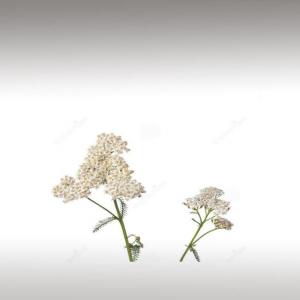

Achillea millefolium is a perennial herb
that grows up to 1 meter high and has fern-like feathery leaves and
bears numerous pink-white, dense flower heads. It is also known as milfoil, referring to its feathery appearance and was used as a charm in Scotland and was credited with having powers to ward off evil.
Yarrow has a reputation of having an all-healing action and has been used for a variety of ailments throughout the ages and is even added to some Swedish beers.
Submitted by OperaDreamhouse (May 7, 2014)
Small-leaved Linden distillate (Tilia cordata) ☸ Herbal distillates ☸ Base / General
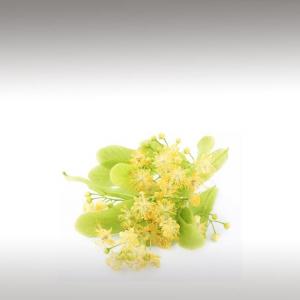
 Tilia cordata is a deciduous tree growing to 20–40 m tall,
diameter 1/3 to 1/2 the height, with a trunk up to 1 m diameter. The
crown is rounded in a formal ovel shape to pyramidal. Branching is
upright and increases in density with age.Tilia cordata makes for a
great ornamental shade tree of an open lawn. Also makes a good screen or
backdrop. It is very architectural.
Tilia cordata is a deciduous tree growing to 20–40 m tall,
diameter 1/3 to 1/2 the height, with a trunk up to 1 m diameter. The
crown is rounded in a formal ovel shape to pyramidal. Branching is
upright and increases in density with age.Tilia cordata makes for a
great ornamental shade tree of an open lawn. Also makes a good screen or
backdrop. It is very architectural.Arising from leaf like bracts, clusters of yellowish white five petalled flowers bloom in July. These honey like fragrant flowers are attractive to bees which make an excellent honey from them. Flowers are sometimes used for tea.
Submitted by OperaDreamhouse (May 7, 2014)
Mastic distillate (Pistacia lentiscus) ☸ Herbal distillates ☸ Base / General
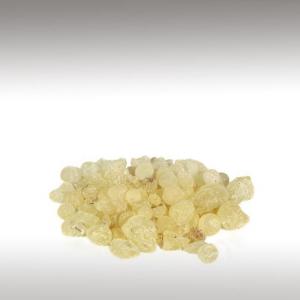

Pistacia Lentiscus is a dioecious evergreen shrub or small tree
of the pistacio genus growing up to 4 m (13 ft) tall which is cultivated
for its aromatic resin, mainly on the Greek island of Chios.
The aromatic, ivory-coloured resin, also known as Mastic, is harvested as a spice from the cultivated Mastic trees grown in the south of the Greek island of Chios in the Aegean Sea, where it is also known by the name "Chios Tears".
The aromatic, ivory-coloured resin, also known as Mastic, is harvested as a spice from the cultivated Mastic trees grown in the south of the Greek island of Chios in the Aegean Sea, where it is also known by the name "Chios Tears".
Originally liquid, it is
hardened, when the weather turns cold, into drops or patties of hard,
brittle, translucent resin. When chewed, the resin softens and becomes a
bright white andopaque gum.
Mastic Hydrolate is an aqueous extract obtained from Mastic resin (Pistacia Lentiscus var. Chia) is distilled with water vapor (steam distillation).
Submitted by OperaDreamhouse (May 7, 2014)
Wild carrot distillate (Daucus carota) ☸ Herbal distillates ☸ Base / General
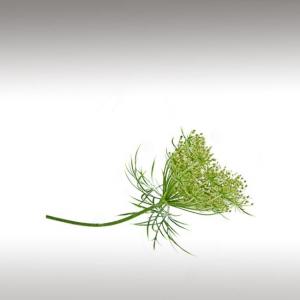

Daucus carota is a flowering plant in the family Apiaceae, native to temperate regions of Europe, southwest Asia and naturalised to North America and Australia.
Daucus carota is a biennial plant that grows a rosette of leaves in the spring and summer, while building up the stout taproot that stores large amounts of sugars for the plant to flower in the second year.
Daucus carota is a biennial plant that grows a rosette of leaves in the spring and summer, while building up the stout taproot that stores large amounts of sugars for the plant to flower in the second year.
Submitted by OperaDreamhouse (May 7, 2014)
Neroli distillate (Citrus Aurantium Amara) ☸ Herbal distillates ☸ Base / General
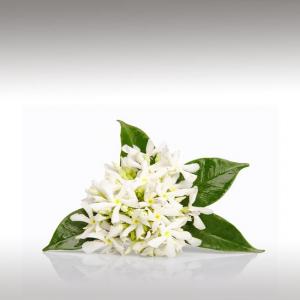

Orange Blossom Water is the clear, perfumed by-product of the distillation of fresh Bitter-Orange Blossoms for their essential oil.
In Morocco Orange Blossom Water is called Ilma Zhar, phrase in Arabic literally meaning "Flower Water," in contrast to Llma Ward, which is Rose Blossom Water. Orange Blossom Water serves two purposes in Morocco.
In Morocco Orange Blossom Water is called Ilma Zhar, phrase in Arabic literally meaning "Flower Water," in contrast to Llma Ward, which is Rose Blossom Water. Orange Blossom Water serves two purposes in Morocco.
One usage is a perfume or
freshener, usually given to guests to wash their hands upon entering the
host house or before drinking tea, in a special silver or metal
container; recognizable in the Moroccan tea set. but this old custom is
fading away in the present day
Neroli Hydrosol, also known as Orange Blossom, is one of the most versatile Hydrosols with a pronounced impact in both skin care and Aromatherapy.
This delightful Hydrosol has an uplifting bitter-sweet citrusy floral aroma that is quite complex. It is a very mild version of its essential oil counterpart, making it a beautiful addition to formulations.
Submitted by OperaDreamhouse (May 7, 2014)
Palmarosa Distillate (Cymbopogon Martinii) ☸ Herbal distillates ☸ Base / General
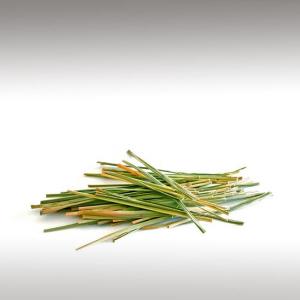

It is a wild growing, herbaceous green and straw-colored grass, with
long slender stems, terminal flowering tops and fragrant grassy leaves.
It is harvested before the flowers appear and the highest yield is
obtained when the grass is fully dried - about one week after it has
been cut.
Palmarosa plantation remains productive for about eight years. However, the yield of grass and oil starts decreasing from the fourth year onwards. It is, therefore, recommended that the plantation be kept only for four years.
The grass is either distilled afresh or is allowed to wilt for 24 hours. Wilting reduces the moisture content and allows a larger quantity of grass to be packed into the still, thus economizing the fuel use. The current method of distillation adopted in Kerala is primitive and obsolete and gives oil of poor quality, as it is based on hydro-distillation or direct-fired still. For good quality oil, it is advisable to adopt steam-distillation.
Palmarosa plantation remains productive for about eight years. However, the yield of grass and oil starts decreasing from the fourth year onwards. It is, therefore, recommended that the plantation be kept only for four years.
The grass is either distilled afresh or is allowed to wilt for 24 hours. Wilting reduces the moisture content and allows a larger quantity of grass to be packed into the still, thus economizing the fuel use. The current method of distillation adopted in Kerala is primitive and obsolete and gives oil of poor quality, as it is based on hydro-distillation or direct-fired still. For good quality oil, it is advisable to adopt steam-distillation.
Palmarosa Water gets in distillation process of Cymbopogon Martinii essential oil.
Palmarosa Distillate has a sweet floral, rosy, geranium scent, giving a refreshing and clarifying feeling. It is wonderful to use as a general spray any time of the day.
Submitted by OperaDreamhouse (May 7, 2014)
Thyme Essential Oil (Thymus Vulgaris) ☸ Essential oils ☸ Base / General
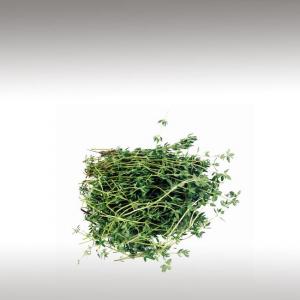

Botanical Name: Thymus vulgaris
Common Method of Extraction: Steam Distilled
Part Typically Used: Inflorescences
Color: Reddish-brown to amber
Consistency: Slightly oily feeling
Perfumery Note: Middle
Strength of Initial Aroma: Sweet, strongly herbal smell
Chemical structure: The main chemical components are a-thujone, a-pinene, camphene, b-pinene, p-cymene, a-terpinene, linalool, borneol, b-caryophyllene, thymol and carvacrol.
Thyme oil is extracted from Thymus Vulgaris of the Labiatae family and is also known as common or Red Thyme.
It has a rather sweet, yet strongly herbal smell and is reddish-brown to amber in color. It is extracted from the fresh or partly dried flowering tops and leaves of the plant by water or steam distillation and the yield is 0,7 -1,0 %.
Common Method of Extraction: Steam Distilled
Part Typically Used: Inflorescences
Color: Reddish-brown to amber
Consistency: Slightly oily feeling
Perfumery Note: Middle
Strength of Initial Aroma: Sweet, strongly herbal smell
Chemical structure: The main chemical components are a-thujone, a-pinene, camphene, b-pinene, p-cymene, a-terpinene, linalool, borneol, b-caryophyllene, thymol and carvacrol.
Thyme oil is extracted from Thymus Vulgaris of the Labiatae family and is also known as common or Red Thyme.
It has a rather sweet, yet strongly herbal smell and is reddish-brown to amber in color. It is extracted from the fresh or partly dried flowering tops and leaves of the plant by water or steam distillation and the yield is 0,7 -1,0 %.
Submitted by OperaDreamhouse (May 5, 2014)
Lemongrass Essential Oil (Cymbopogon Citratus) ☸ Essential oils ☸ Base / General
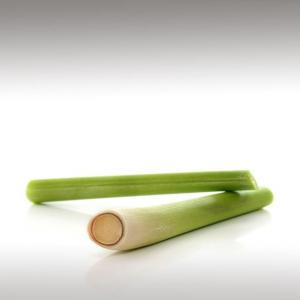

Botanical Name: Cymbopogon citratus
Common Method of Extraction: Steam Distilled
Part Typically Used: Leaves
Color: Dark yellow to amber and reddish in color
Consistency: Slightly oily feeling
Perfumery Note: Middle
Strength of Initial Aroma: Lemony, sweet smell.
Cymbopogon Citratus, commonly known as lemon Grass or Oil Grass, is a tropical plant from Southeast Asia. It is a perennial fast-growing aromatic grass, growing to about 1 meter high with long, thin leaves and originally was growing wild in India. It produces a network of roots and rootlets that rapidly exhaust the soil.
Lemongrass oil is extracted from the fresh or partly dried leaves by steam distillation. This oil has a lemony, sweet smell and is dark yellow to amber and reddish in color, with a watery viscosity.
Chemical structure:
The main chemical components of lemongrass oil are myrcene, citronellal, geranyl acetate, nerol, geraniol, neral and traces of limonene and citral.
Submitted by OperaDreamhouse (May 5, 2014)
Black Spruce Essential Oil (Picea Mariana) ☸ Essential oils ☸ Base / General
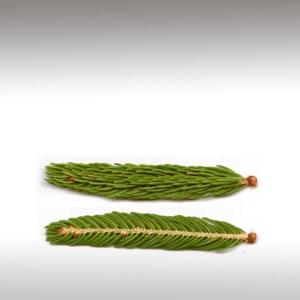

Botanical Name: Picea mariana
Common Method of Extraction: Steam distillation
Part Typically Used: Needles and twigs
Color: Pale yellow
Consistency: Thin
Perfumery Note: Top / Middle
Strength of Initial Aroma: Fresh-balsamic, oily-sweet coniferous aroma, with a fruity-resinous undertone. Clean, with sweet hints of wood and earth.
Spruce Black essential oil is one of Canada’s best kept secrets. It is sweeter, and softer than most evergreen oils with a balsamic, resinous odor with green woody notes. Overall, the scent is very clean, fresh and pleasant.
Black Spruce essential oil has a much milder, sweeter scent compared to other oils from the evergreen family.
Picea mariana (black spruce) is a species of spruce native to northern North America, from Newfoundland to Alaska, and south to Pennsylvania, Minnesota and central British Columbia, in the biome known as taiga or boreal forest.
Picea mariana is a slow - growing, small upright evergreen coniferous tree, having a straight trunk with little taper, a scruffy habit, and a narrow, pointed crown of short, compact, drooping branches with upturned tips. Through much of its range it averages 5 - 15 m tall with a trunk 15 - 50 cm diameter at maturity, though occasional specimens can reach 30 m tall and 60 cm diameter.
The bark is thin, scaly, and grayish brown. The leaves are needle - like, 6 - 15 mm long, stiff, four-sided, dark bluish green on the upper sides, paler glaucous green below. The cones are the smallest of all of the spruces, 1,5 - 4 cm long and 1 - 2 cm broad, spindle - shaped to nearly round, dark purple ripening red - brown, produced in dense clusters in the upper crown, opening at maturity but persisting for several years.
The timber is of low value due to the small size of the trees, but it is an important source of pulpwood and the primary source of it in Canada. Fast - food chopsticks are often made from black spruce.
Black spruce is the provincial tree of Newfoundland and labrador. The black spruce tree grows along side other trees such as white spruce, red spruce, as well as larch (aka Tamarack). The forests in which they grow harbor safety of much wildlife such as deer, moose and elk. This symbiotic relationship adds much to its energetic properties.
Chemical structure:
In terms of its chemical constituents, the essential oil is rich in monoterpenes including alpha- and beta-pinene, delta-3-carene, camphene, l-alpha-phellandrene and esters including bornyl acetate.
Black spruce essential oil has a significant percentage of camphene. This monoterpene is known specifically to be a powerful mucolytic so it is quite beneficial for respiratory issues.
Common Method of Extraction: Steam distillation
Part Typically Used: Needles and twigs
Color: Pale yellow
Consistency: Thin
Perfumery Note: Top / Middle
Strength of Initial Aroma: Fresh-balsamic, oily-sweet coniferous aroma, with a fruity-resinous undertone. Clean, with sweet hints of wood and earth.
Spruce Black essential oil is one of Canada’s best kept secrets. It is sweeter, and softer than most evergreen oils with a balsamic, resinous odor with green woody notes. Overall, the scent is very clean, fresh and pleasant.
Black Spruce essential oil has a much milder, sweeter scent compared to other oils from the evergreen family.
Picea mariana (black spruce) is a species of spruce native to northern North America, from Newfoundland to Alaska, and south to Pennsylvania, Minnesota and central British Columbia, in the biome known as taiga or boreal forest.
Picea mariana is a slow - growing, small upright evergreen coniferous tree, having a straight trunk with little taper, a scruffy habit, and a narrow, pointed crown of short, compact, drooping branches with upturned tips. Through much of its range it averages 5 - 15 m tall with a trunk 15 - 50 cm diameter at maturity, though occasional specimens can reach 30 m tall and 60 cm diameter.
The bark is thin, scaly, and grayish brown. The leaves are needle - like, 6 - 15 mm long, stiff, four-sided, dark bluish green on the upper sides, paler glaucous green below. The cones are the smallest of all of the spruces, 1,5 - 4 cm long and 1 - 2 cm broad, spindle - shaped to nearly round, dark purple ripening red - brown, produced in dense clusters in the upper crown, opening at maturity but persisting for several years.
The timber is of low value due to the small size of the trees, but it is an important source of pulpwood and the primary source of it in Canada. Fast - food chopsticks are often made from black spruce.
Black spruce is the provincial tree of Newfoundland and labrador. The black spruce tree grows along side other trees such as white spruce, red spruce, as well as larch (aka Tamarack). The forests in which they grow harbor safety of much wildlife such as deer, moose and elk. This symbiotic relationship adds much to its energetic properties.
Chemical structure:
In terms of its chemical constituents, the essential oil is rich in monoterpenes including alpha- and beta-pinene, delta-3-carene, camphene, l-alpha-phellandrene and esters including bornyl acetate.
Black spruce essential oil has a significant percentage of camphene. This monoterpene is known specifically to be a powerful mucolytic so it is quite beneficial for respiratory issues.
Submitted by OperaDreamhouse (May 5, 2014)
Elemi Essential Oil (Canarium Luzonicum) ☸ Essential oils ☸ Base / General
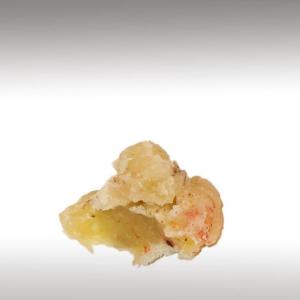

Canarium Luzonicum commonly known as Elemi, is a tree native to the Philippines, and an oleoresin harvested from it. Elemi resin is a pale yellow substance, of honey-like consistency. Aromatic Elemi oil
is steam distilled from the resin. It is a fragrant resin with a sharp
pine and lemon-like scent. One of the resin components is called amyrin.
Botanical Name: Canarium luzonicum
Common Method of Extraction: Steam Distilled
Part Typically Used: The oleoresin
Color: Pale yellow colour. Pale straw coloured essential oil
Consistency: Slightly oily feeling
Perfumery Note: Base
Strength of Initial Aroma: Pale yellow-white flowers. Woody and balsamic fragrance, with citrus and spicy overtones.
Canarium luzonicum is a tropical dioecious tree or shrub found in the primary forests of Luzon and other islands that make up the Philippines, where it is believed to have originated. It has a spreading habit, alternate pinnate leaves, and small pale yellow-white flowers. This species can easily reach a height of 30 metres. The tree exudes a pale yellow resin when the tree sprouts leaves. The resin solidifies on contact with the air and the resin stops flowing when the tree loses its leaves.
Elemi oleoresin is contained mostly in resin channels on the inside of the bark, and is produced mainly during the rainy season. Like other canarium trees it produces an almond shaped nut which is known locally as ''pili'', and the tree is called ''malapili''. Canarium luzonicum grows mainly in the Philippines, but it is also found in South and Central America, Australia, Brazil, India, the Malay Peninsula, and Moluccas.
Elemi was possibly one of the first aromatics used by the ancient Egyptians to embalm the dead, along with Frankincense, Myrrh, Galbanum and Lebanese Cedar. It is also documented that the Egyptians used it in their daily skincare preparations as well as in medicinal salves, poultices, unguents and incense.
As the oleoresin ages, it becomes waxy and yellow, losing most of its balsamic smell. Elemi essential oil is obtained by distillation of the oleoresin, and is colourless or a very pale yellow. It smells strongly balsamic, hot and aromatic, due to its main constituent, phellandrene.
Elemi resin is a pale yellow substance, of honey-like consistency. Aromatic Elemi oil is steam distilled from the resin. It is a fragrant resin with a sharp pine and lemon-like scent. One of the resin components is called amyrin. (The amyrins are a pair of closely related natural chemical compounds of the triterpene class. They are designated α-amyrin and β-amyrin. Each has the chemical formula C30 H50 O. They are widely distributed in nature and have been isolated from a variety of plant sources.).
Extraction:
The tappers cut into the trunk to remove oblong strips of bark using a wooden mallet and a single edged machete known locally as a 'bolo'. Subsequent strips of bark are removed every few days to stimulate the flow of exudate. The oleoresin is left to trickle down the bark where it becomes waxy, turning a pale yellow colour and resembling crystallized honey in consistency.
After harvesting, the oleoresin is steam distilled to release a colourless or pale straw coloured essential oil with a woody and balsamic fragrance, with citrus and spicy overtones.
Submitted by OperaDreamhouse (May 5, 2014)
Page 41 of 48

